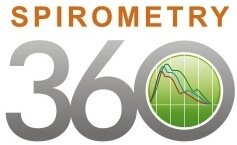Asthma is a chronic lung disease that inflames and narrows the airways. Asthma causes recurring periods of wheezing (a whistling sound when you breathe), chest tightness, shortness of breath, and coughing, which often occurs at night or early in the morning. Asthma is the leading cause of hospitalization among children and is a leading cause of work and school absences at all ages.
Spirometry in the Management of Asthma
One goal in the management of asthma is to return patients back to “perfect” (normal or “near” normal pulmonary function) in between episodes. Spirometry permits an objective measurement of the degree of airway obstruction (impairment).
Why do Spirometry for Asthma?
- Patients’ perceptions of obstruction are notoriously inaccurate.
- Significant obstruction can be present even when the chest is clear on physical examination.
- Clinical symptoms alone will underestimate severity approximately 30% of the time in primary care.
- Peak expiratory flow (PEF) is highly variable, is not a very sensitive measure of obstruction, and is no longer recommended for diagnosis of asthma.
- Spirometry allows for the measurement of the severity of obstruction. The more severe the obstruction, the more likely the patient will have significant asthma exacerbations.
EPR-3 Guidelines for the Diagnosis and Management of Asthma*
Office-based physicians who care for asthma patients should have access to spirometry, which is useful in both diagnosis and periodic monitoring. Spirometry can usually be adequately performed in children 5 years of age and older.
In practice, spirometry is typically collected as a vital sign when the patient is seen for a planned visit. Pre- and post-bronchodilator testing can be helpful to establish a diagnosis.
EPR-3 recommends spirometry be performed:
- At the time of initial evaluation (diagnosis).
- After treatment is initiated and symptoms (and peak flows) have stabilized.
- During periods of progressive or prolonged loss of control.
- At least every one or two years.*
Source: NHLBI/NIH National Asthma Education and Prevention Program. Expert Panel Report 3: July, 2007.

